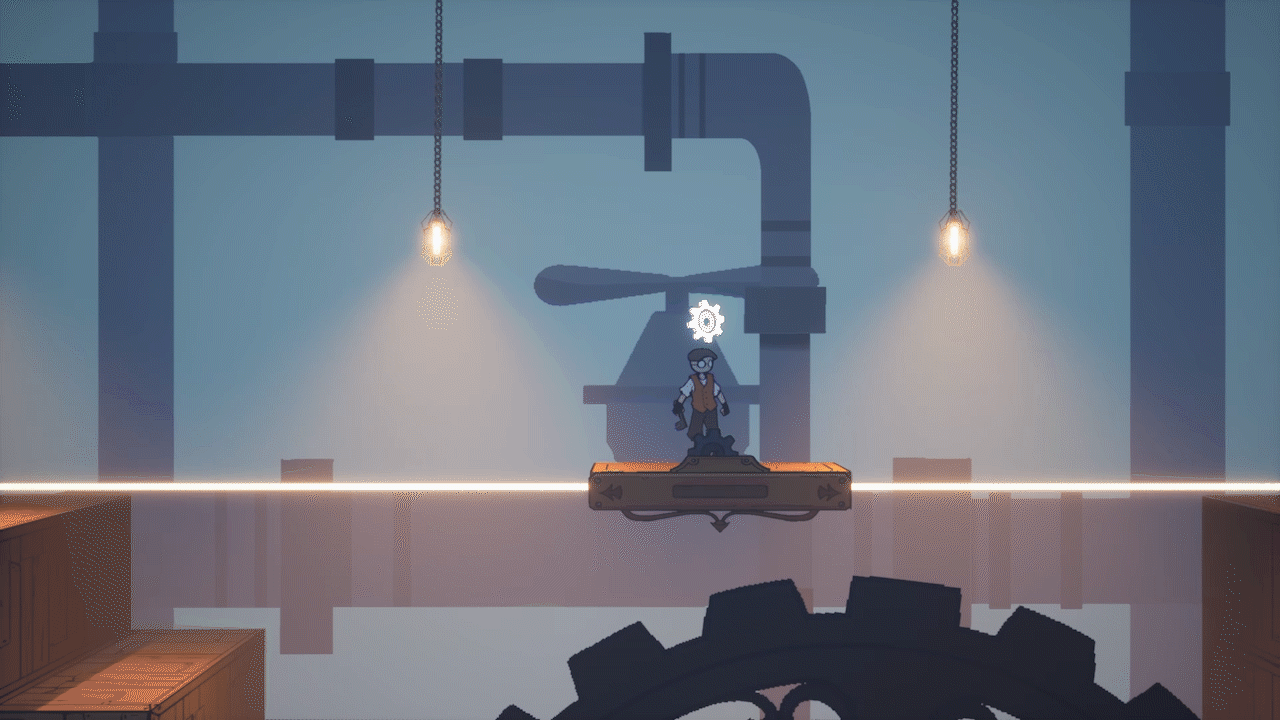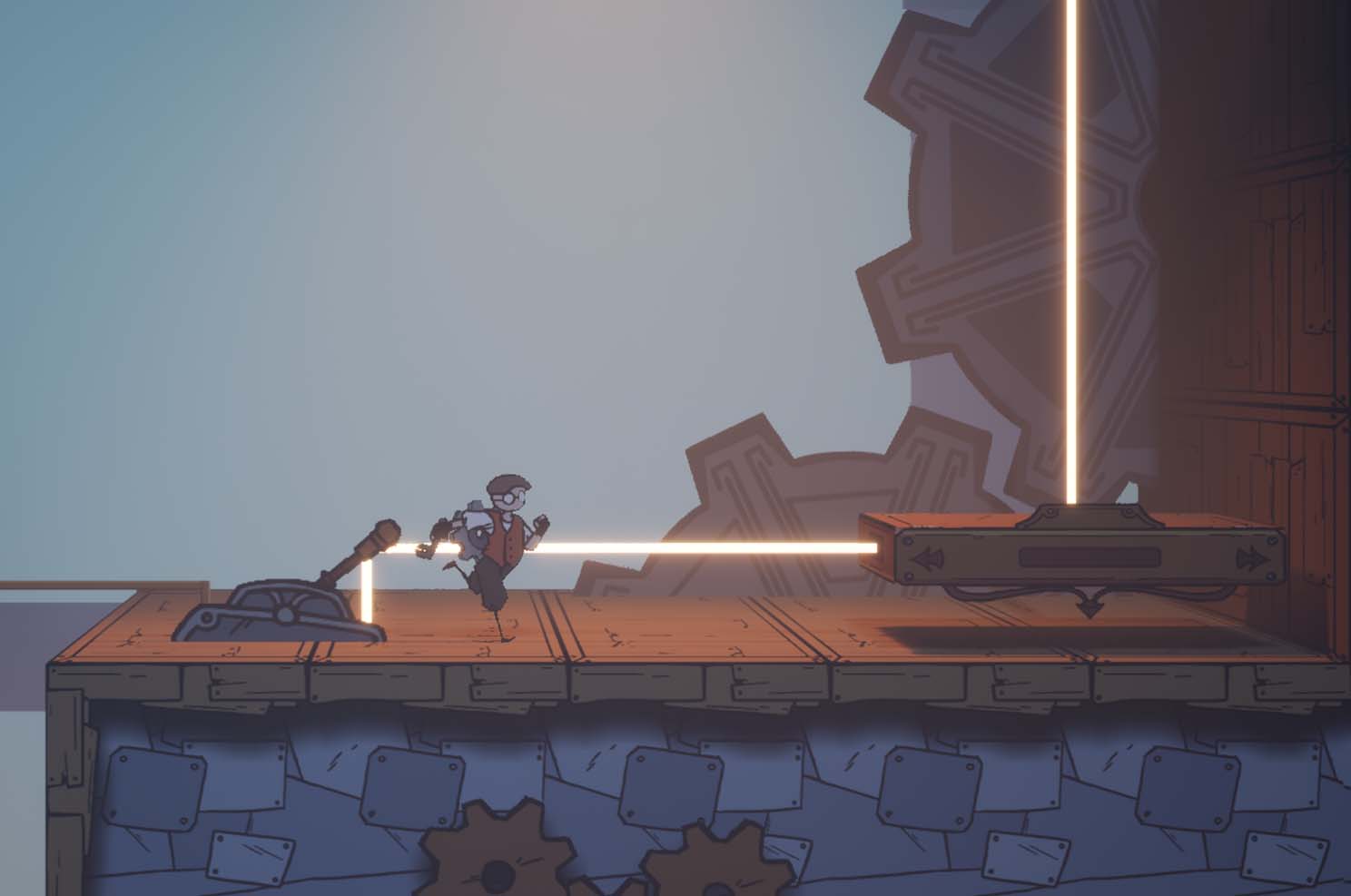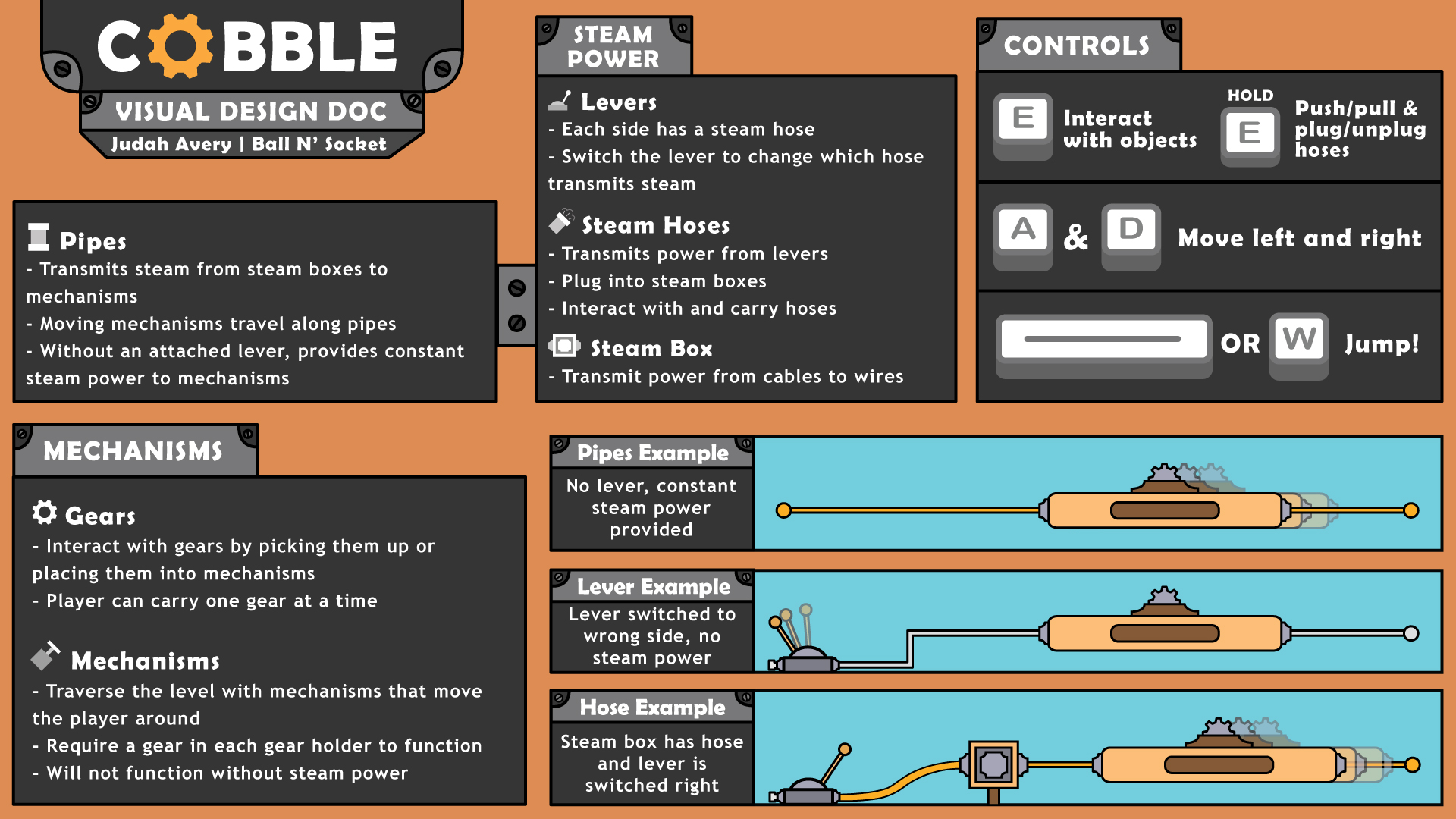PROJECT
Overview

Team Size: 8 Members
Prototype Time: 48 Hours (Game Jam)
Full Development Time: Jan 2020 - April 2020
Development Tools: UE4, Photoshop, Blender
Genre: Puzzle Platformer
Platform: Windows PC
My Contributions
- Designed systems and levels
- Built levels and environments
- Designed UI and interaction
- Pipeline and design documentation
- Organized and led the team
- Ran meetings and weekly reviews
- Led the creative direction

COBBLE
Case Study
Project Overview
Cobble is a 2.5D side-scrolling puzzle-platformer game. The base game was created in under 48 hours for the 2020 Global Game Jam, and afterward, our team of 8 students (myself included) continued to develop the project further. Cobble began pre-production and the team continued development for a few months until we were no longer able to continue. Through pre-production, we planned out the course of development and direction for Cobble. This included lots of documentation, core systems implementation, art asset creation, and project management. Even though most of the progress we made over these 3 months didn't take place in the game's content itself, I gained a lot of valuable skills from Cobble.
Game Intent
Shortly after the game jam, we had other students play Cobble and they commonly complimented the game's setting and aesthetics. This showed some key points of interest that Cobble had, so I decided to focus heavily on those aspects and design the game around them. Because of the interest players had in the game's fantasy, I wanted them to feel a strong curiosity towards the world Cobble took place in, so we ensured that the art style, setting, story, and context were all very catchy and interesting from the get-go. The documented plan for the full version of Cobble intended to take aspects from exploratory genres and incorporate them into levels with platforming puzzles. Each puzzle the player solved would tell more about the underlying story of the game, making discovery drive the gameplay.

Designing The Core Systems
Many players who tested out the game shortly after the game jam seemed to enjoy the simple core puzzle systems. The goal of each level is moving from point A to B and players must use the machines inside their environment to traverse the level. Different machines have unique uses and movement patterns. For example, platforms will move or rotate, while pistons will launch the player. However, these machines have two functional requirements: power from a lever and a gear. Cobble can remove gears from machines to place them in others and can switch levers to change which machines are provided with power. Players caught onto these core mechanics very quickly and making the game's difficulty scalable meant that a simple concept needed to be built upon in difficulty. I didn't want players to have a stressful experience, so it was important to keep puzzles from feeling overwhelming or too complex. Stress would pull players out of the world and cause frustration, taking away from having a strong world fantasy and curiosity.
These core mechanics (placing gears and switching levers) may have been sufficient for a small game jam, but they weren't quite scalable enough to produce an hour or two of interesting puzzles. The issue here was adding more complexity to the game while trying not to overwhelm players. One of the main interests players had was the art style, setting, and context of the game. I didn't want to risk adding systems that added unnecessary complexity and didn't build upon other already existing systems. To mitigate this risk, I decided to rework the original core mechanics and add two additional ones. For starters, instead of switching the transmission of power, levers would switch the flow of steam between machines steam hoses, which were attached to a "steam box" (box that sends steam to machine pipes). Players could now remove the hose end from one steam box and plug them into another, changing which mechanism would function on one side of the lever. The ability to essentially re-wire which machines will function based on the lever adds even more depth to the underlying core Systems without adding an entirely new concept to understand. After creating a visual design document representing this change, I made sure the rest of the team figured the concept was easy to grasp. Future levels could now incorporate "re-wiring" and build upon the player's existing knowledge of the underlying mechanics from past levels without causing them to feel confused.









